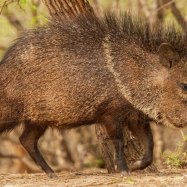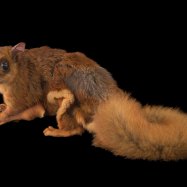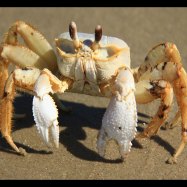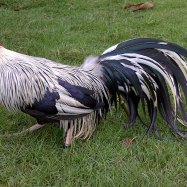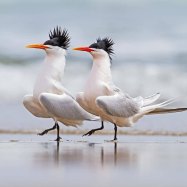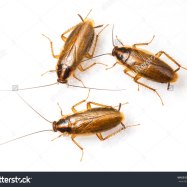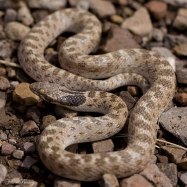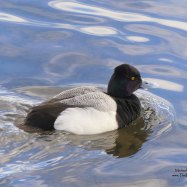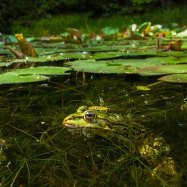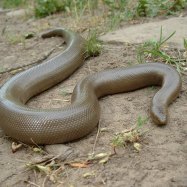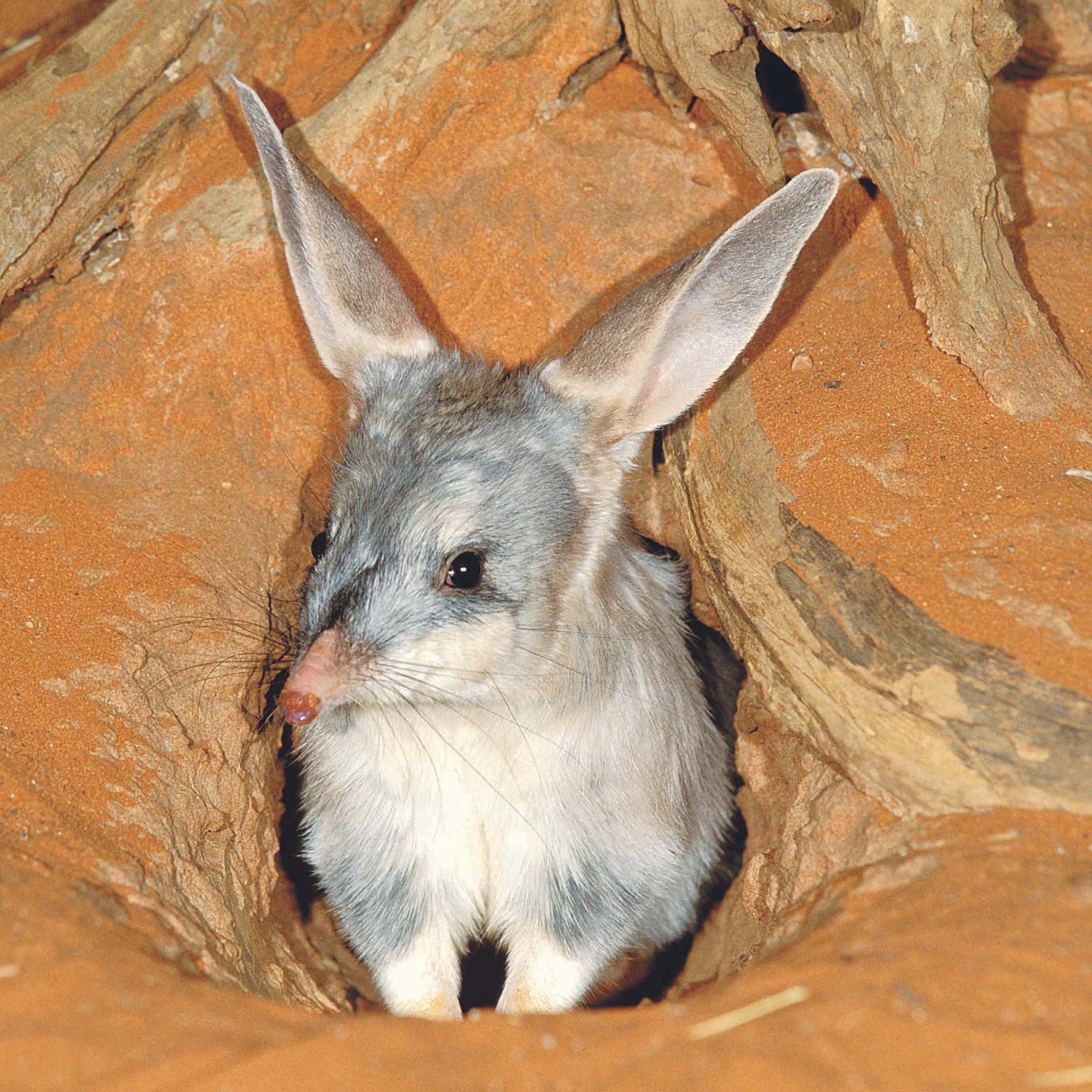
Bilby
29 to 55 centimeters
Meet the bilby, a small mammal native to western and central Australia. With a body length of 29 to 55 centimeters, these slender creatures belong to the family Thylacomyidae. Their unique body shape includes long ears and a long, slender tail. Sadly, due to habitat loss and introduced predators, the bilby is considered a vulnerable species. Let's spread awareness and protect these precious animals.
Animal Details Summary:
Common Name: Bilby
Kingdom: Animalia
Habitat: Deserts and grasslands
The Bilby: Australia's Beloved Desert Dweller
The Australian outback is a place of wonder, with its breathtaking landscapes and unique wildlife. In this vast, arid expanse, there is one tiny creature that stands out – the Bilby. This elusive, charming, and endangered marsupial has captured the hearts of many and is known as one of Australia's most treasured animals.Scientifically known as Macrotis lagotis, the Bilby is commonly referred to as the rabbit-eared bandicoot or dalgyte by the Indigenous people of Australia Bilby. Its unique appearance, intriguing behaviors, and importance to the ecosystem make it a fascinating subject for study and conservation efforts.
Let's dive deeper into the world of the Bilby and discover what makes it a remarkable creature that is loved by many.
The Taxonomy of the Bilby
Before we get into the nitty-gritty of the Bilby's characteristics, it's essential to understand its taxonomy. The Bilby belongs to the Animalia kingdom, the Chordata phylum, and the Mammalia class. Its order is Peramelemorphia, and its family is Thylacomyidae. This classification places the Bilby in the same family as other marsupials like kangaroos and wallabies.The scientific name, Macrotis lagotis, comes from the Greek words "makros" and "otis," which means "long-eared" in reference to the Bilby's prominent ears. Meanwhile, lagotis is derived from the Greek words "lago" and "otis," which translates to "hare-eared."
The Physical Appearance of the Bilby
The Bilby is a small, slender marsupial with a distinctive sandy brown to gray coloration Bison. It has a long snout, large ears, and a long, thin tail, giving it a striking resemblance to a secret agent in disguise. Its fur is short, soft, and thick, providing excellent insulation against the harsh climate of the Australian desert.Adult Bilbies can grow to a length of 29 to 55 centimeters, with a weight ranging from 0.75 to 2 kilograms. They have a streamlined body shape, which helps them move quickly through the sandy terrain, and their long tail serves as a rudder for balance during swift movements.
One of the most notable features of the Bilby is its large ears, measuring up to 10 centimeters in length. These ears not only give it a unique appearance but also serve a vital function. The Bilby's oversized ears help it stay cool in the extreme heat of the outback by dissipating body heat. They also have a keen sense of hearing, essential for survival in the desert environment.
The Habitat and Distribution of the Bilby
Bilbies are solitary animals that prefer to live in arid and semi-arid habitats like deserts, dry grasslands, and woodlands. They can also thrive in areas with spinifex grass, which is an excellent source of food and shelter.The geographical distribution of Bilbies is limited to Australia, with its country of origin also being Australia. They are found in various regions of Western and central Australia, including the Great Sandy Desert, Gibson Desert, and Tanami Desert.
The Feeding Habits of the Bilby
Bilbies are highly adaptable and are one of the few Australian mammals that are classified as omnivores. Their diet typically consists of insects like beetles, ants, termites, and spiders, as well as seeds, bulbs, and nectar from various plants. They have a keen sense of smell, which helps them locate food sources under the surface of the sand.To forage for food, Bilbies use their long, sharp claws to dig deep burrows in the earth, which can go up to three meters long. These burrows also serve as their shelter and provide protection from predators and harsh weather conditions.
The Importance of the Bilby in the Ecosystem
Bilbies play a crucial role in the Australian ecosystem, and their absence can have significant impacts on the environment. As an omnivorous animal, they help maintain the balance between herbivorous insects and the plants they feed on. They also contribute to seed dispersal, promoting plant growth in the arid regions of Australia.Additionally, Bilbies are considered essential in the control of feral animals like rabbits, which pose a significant threat to the ecosystem.
The Conservation Status of the Bilby
Sadly, the Bilby is currently classified as an endangered species. Their population has drastically declined over the years due to habitat destruction, competition with introduced species, and predation by feral animals. The introduction of feral cats and foxes has been particularly detrimental to Bilby populations.Various organizations and government agencies have been working towards the conservation of the Bilby. Initiatives such as captive breeding programs, predator control, and habitat restoration have been implemented to revive their dwindling numbers.
In recent years, the introduction of the National Bilby Day in Australia has also raised awareness about the plight of these precious creatures and their declining population.
Interesting Facts about the Bilby
1. The Bilby is believed to be one of the inspirations for the mythical creature known as the Easter Bunny.2. Bilbies have an unusual reproductive system, where females have two uteri and males have a bifurcated penis.
3. Bilbies are excellent diggers, and they can dig a burrow up to three meters long in a single night.
4. They are mostly nocturnal creatures, spending most of their waking hours foraging for food and sheltering during the day.
5. The Bilby is considered a "keystone species," meaning its presence is essential for maintaining the balance of the ecosystem.
In Conclusion
The Bilby may be a tiny creature, but its importance in the Australian ecosystem is immense. Its unique appearance, intriguing behaviors, and vital role in the environment make it a beloved animal by many. As we continue to work towards the conservation of this endangered species, let us appreciate and protect the precious treasures that the Australian outback has to offer.

Bilby
Animal Details Bilby - Scientific Name: Macrotis lagotis
- Category: Animals B
- Scientific Name: Macrotis lagotis
- Common Name: Bilby
- Kingdom: Animalia
- Phylum: Chordata
- Class: Mammalia
- Order: Peramelemorphia
- Family: Thylacomyidae
- Habitat: Deserts and grasslands
- Feeding Method: Omnivorous
- Geographical Distribution: Australia
- Country of Origin: Australia
- Location: Western and central Australia
- Animal Coloration: Sandy brown to gray
- Body Shape: Small, slender body with long ears and a long, slender tail
- Length: 29 to 55 centimeters
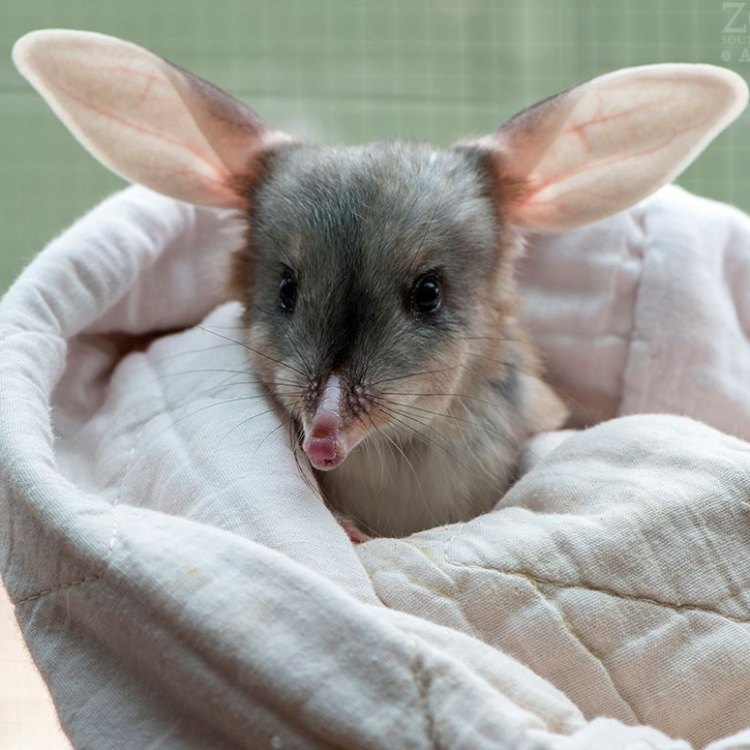
Bilby
- Adult Size: 35 to 55 centimeters
- Average Lifespan: 5 to 7 years
- Reproduction: Marsupial
- Reproductive Behavior: Mating occurs between August and March
- Sound or Call: Soft chirping or clicking sounds
- Migration Pattern: Non-migratory
- Social Groups: Solitary or live in small groups
- Behavior: Nocturnal and burrow during the day
- Threats: Habitat loss and introduced predators
- Conservation Status: Vulnerable
- Impact on Ecosystem: Important for seed dispersal and soil aeration
- Human Use: Occasionally kept in captivity for conservation purposes
- Distinctive Features: Long ears and a long, slender tail
- Interesting Facts: Bilbies are excellent diggers and can create extensive burrow systems
- Predator: Introduced predators such as foxes and cats
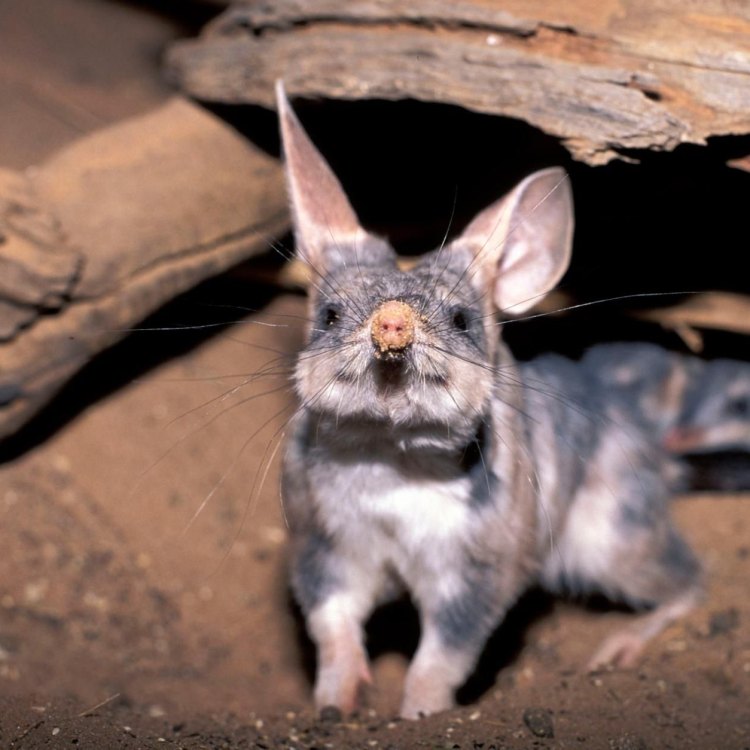
Macrotis lagotis
The Fascinating World of the Bilby: A Unique Australian Marsupial
The Australian continent is home to a diverse range of wildlife, and one of the most unique and fascinating species found here is the Bilby. This small, rabbit-like marsupial has captured the attention of scientists, conservationists, and the general public alike with its distinctive features and behavior. In this article, we will explore the world of the Bilby, from its physical characteristics to its behavior and ecological importance.The Bilby, also known as the rabbit-bandicoot, is a small marsupial native to Australia PeaceOfAnimals.Com. Its scientific name is Macrotis lagotis, which comes from the Greek words for "large-eared" and "hare-like" respectively. These characteristics are what give the Bilby its iconic and adorable appearance.
As adults, Bilbies can grow to be between 35 to 55 centimeters in length, with their tail comprising almost half of their body size. They weigh between 1.5 to 2.5 kilograms and have a unique coat color that ranges from gray to tan, with white underparts. They also have long, powerful hind feet, which they use for digging burrows, and large, pointed ears that are used for excellent hearing.
The Bilby has an average lifespan of 5 to 7 years in the wild. This may seem short, but for a small, fast-breeding animal, it is relatively long Blue Jay. Unfortunately, their lifespan is significantly shorter in the wild due to various threats, which we will discuss later in this article.
One of the most fascinating aspects of the Bilby is its reproduction. Like all marsupials, female Bilbies have a pouch to carry and nurse their young. They are polygamous, with one female mating with multiple males during the breeding season, which occurs between August and March.
During this time, the male Bilby marks its territory with a pungent scent and then seeks out females to mate with. The female can give birth to up to three young at a time, known as joeys. Interestingly, their gestation period is only 12 to 14 days, and the young stay in the pouch for approximately 80 days, after which they are fully weaned.
Bilbies are also known for their distinctive sounds or calls. While they are mainly silent, they can make soft chirping or clicking sounds, which are used for communication within their social groups or during mating rituals. These sounds are not only cute and fascinating but also critical for conservationists studying and monitoring these elusive animals in the wild.
Unlike some other marsupials, Bilbies do not migrate and instead remain in their home range throughout the year. They are non-migratory animals and prefer to stay in their preferred habitat, which is usually in areas with soft, sandy soil, perfect for burrowing.
Speaking of habitat, Bilbies are primarily solitary animals, only coming together to mate or when they accidentally cross paths. However, on rare occasions, they can be seen living in small groups of up to six individuals, but this is uncommon.
Bilbies are known for their nocturnal behavior, meaning they are most active at night and rest during the day. This behavior is not only useful for avoiding the scorching Australian sun but also for protecting themselves from predators such as foxes and cats, which are introduced species that pose a significant threat to the Bilby population.
Habitat loss and introduced predators are the two main threats facing the Bilby today. With the expansion of urbanization and agriculture in Australia, the Bilby's natural habitat has been steadily declining, leading to a fragmented and smaller population. This fragmentation also creates a barrier to mating, which further impacts their conservation.
Introduced predators, such as foxes and cats, also pose a significant threat to Bilbies. Being a relatively slow-moving animal, Bilbies are easy prey for these predators, and their numbers have drastically declined in areas where these predators have been introduced.
Due to these threats, the Bilby is classified as a Vulnerable species on the International Union for Conservation of Nature (IUCN) Red List. However, conservation efforts are underway in Australia to protect and revive the Bilby population.
One of the most important roles that Bilbies play in the ecosystem is their contribution to seed dispersal. As they dig for food and create burrows, they also redistribute seeds, which helps with plant growth and diversity in the Australian outback. They also play a vital role in soil aeration through their digging, which helps with nutrient exchange and soil health.
Apart from their ecological importance, Bilbies also have well-adapted physical features that make them uniquely suited for their habitat. Their long ears are not only cute but also serve a practical purpose. They provide excellent hearing, which helps them detect predators and prey, and also helps regulate their body temperature.
Furthermore, Bilbies are excellent diggers and can create extensive burrow systems. These burrows not only serve as shelter and protection from the elements and predators but also provide a safe place for their young to be raised.
These unique features and behavior of the Bilby have made it a popular animal in Australian culture and conservation. It has become an important symbol for conservation efforts and is often used as a mascot for initiatives aimed at protecting and reviving its dwindling population.
Bilbies are also occasionally kept in captivity for conservation purposes. Zoos and wildlife parks in Australia have programs in place to breed and release Bilbies into the wild, with the hope of increasing their numbers and creating genetically diverse populations.
In recent years, the Bilby has also gained recognition in popular culture, with many people becoming aware of this unique animal and the challenges it faces. They have become a popular character in children's books and cartoons, helping educate younger generations about this fascinating marsupial and its conservation needs.
In conclusion, the Bilby is a unique and fascinating marsupial found only in Australia. Unfortunately, their numbers have declined significantly due to habitat loss and introduced predators, but conservation efforts are ongoing to protect and revive their population. As we continue to learn more about this elusive animal, we can appreciate its distinctive features, behavior, and ecological importance, and work towards securing its place in the Australian ecosystem for generations to come.
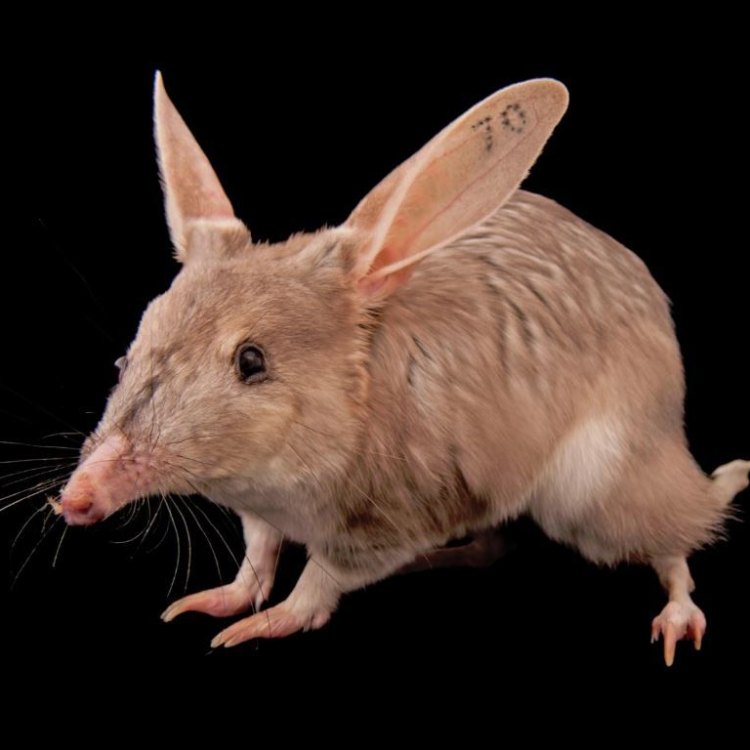
The Bilby: Australia's Beloved Desert Dweller
Disclaimer: The content provided is for informational purposes only. We cannot guarantee the accuracy of the information on this page 100%. All information provided here may change without prior notice.


